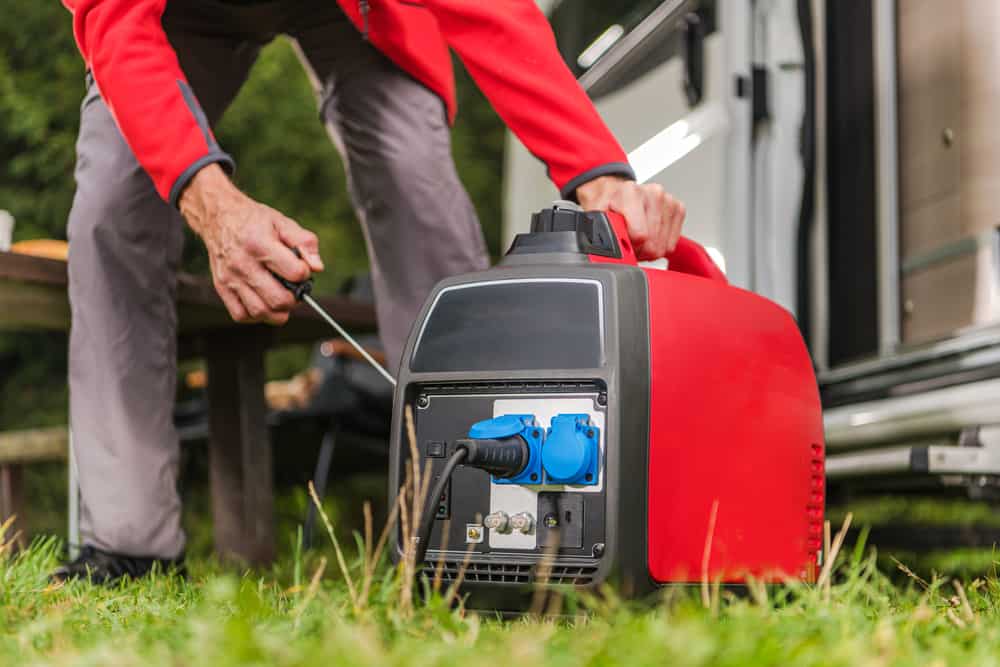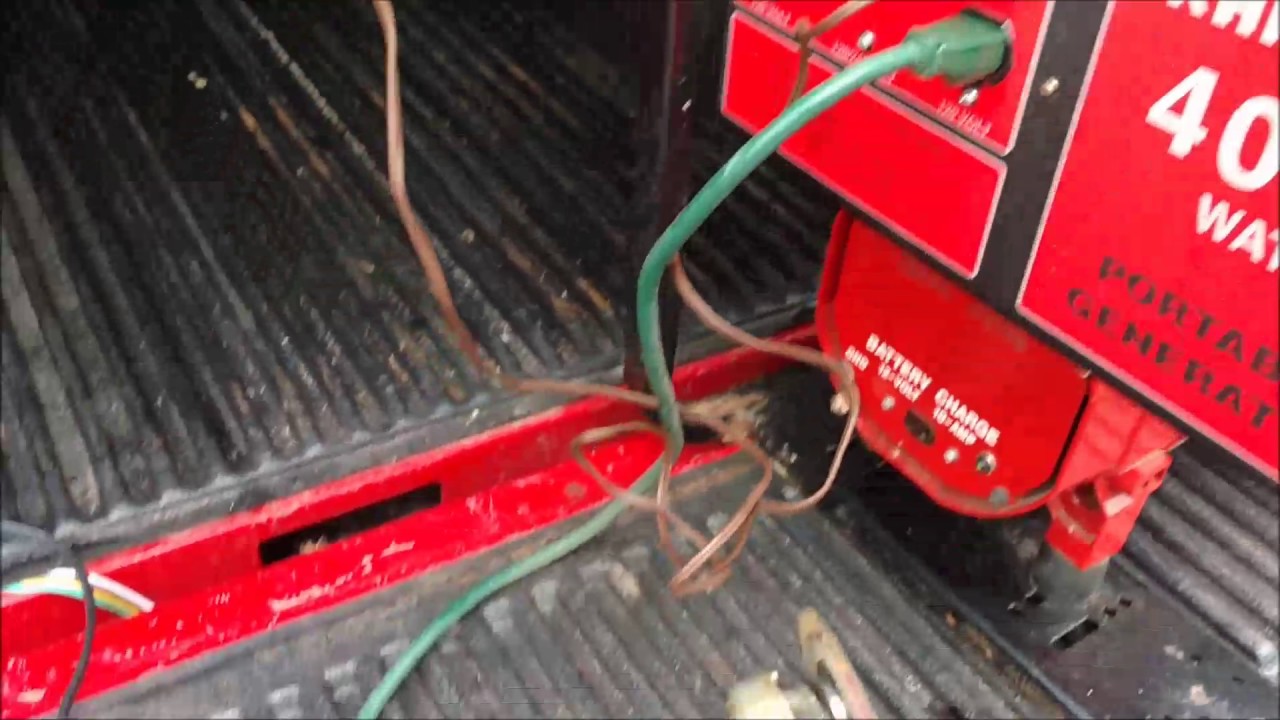If your generator has a dead battery, you can use a jumper cable to flash it. First, make sure the generator is turned off. Then, connect one end of the jumper cable to the positive terminal of the battery and the other end to the positive terminal on the generator.
Finally, start the engine on your car and let it run for a few minutes.
- Make sure that the generator is turned off and disconnect it from any power source
- Remove the generator’s main cover and locate the battery
- Disconnect the negative (-) terminal of the battery, then disconnect the positive (+) terminal
- Reconnect the positive (+) terminal of the battery first, then reconnect the negative (-) terminal
- Replace the generator’s main cover and turn on the generator to test if it is working properly

Credit: www.uetechnologies.com
How Do You Manually Excite a Generator?
Assuming you would like instructions on how to manually start a generator:
If you are starting a generator with an electric starter, first make sure that the choke is in the “run” position. Then, push the primer button a few times until you see fuel entering the carburetor bowl.
Next, turn on the switch or breaker that supplies power to the generator. Finally, press the start button to engage the starter motor.
If your generator has a recoil (pull-start) starter, first make sure that the choke is in the “run” position.
Then, pull out about 18 inches of rope from the housing and give it a sharp tug. Be careful not to wrap your hand around the rope while doing this as it can cause serious injury if kickback occurs.
How Do You Regain Residual Magnetism in a Generator?
If you’re looking to regain residual magnetism in a generator, there are a few things you can do. First, check the manufacturer’s instructions to see if they have any recommendations. If not, then you can try some of the following methods:
One way to try and regain residual magnetism is by using a demagnetizing coil. This sends high-frequency pulses through the generator’s windings which can help align the magnetic domains and reduce overall magnetization.
Another method is to use a process called field flashing, where you apply a DC voltage to the generator’s stator for a short period of time.
This creates an intense magnetic field that helps realign the magnetic domains.
Finally, if all else fails, you can always try re-magnetizing the rotor. This involves applying a strong magnetic field to the rotor which saturates it with magnetism again.
However, this should only be done as a last resort as it can damage the rotor if not done properly.
When Should You Flash the Field of a Generator?
If you have a portable generator, it’s important to know when and how to properly “flash” the field. Flashing the field means connecting the generator’s output terminals to an external power source, such as a utility pole or another generator. This is usually done with a pair of jumper cables.
There are two main reasons why you might need to flash the field of your generator:
1. If the generator has been sitting idle for a long period of time, the field may need to be recharged in order to get it started again.
2. If the generator is running but not producing any power, flashing the field may help troubleshoot the problem.
In either case, it’s important that you follow all safety precautions when working with electricity. Make sure that everyone in the area is aware of what you’re doing and that they stay clear of any live wires. Once everything is set up and ready to go, follow these steps:
1. Connect one end of the positive (red) jumper cable to the positive terminal on your generator.
2. Connect one end of the negative (black) jumper cable to the negative terminal on an external power source (such as a utility pole).
3. Touching only the insulated part of each cable, connect the other end of each cableto its corresponding terminal on your external power source—positive to positive, negative tomnegative—making sure that they’re firmly connected.
.
4. Start your generator and let it run for at least 30 minutes before disconnecting it fromthe external power source..
5If everything looks and sounds normal, you can now disconnect your generator fromthe external power supply by reversing step 3..
What Does It Mean to Flash the Field on a Generator?
When you are using a generator, it is important to know what “flashing the field” means. This term refers to the process of briefly disconnecting the generator’s rotor from its power source, typically done when the rotor is spinning at high speed. This action allows any potential buildup of charge on the rotor to be discharged, preventing damage to the generator or other electrical equipment.
Energizing (flashing) your generator with a car battery
How to Flash a Brushless Generator With a Battery
If you have a brushless generator, you may be wondering how to flash it with a battery. Flashing a brushless generator is a simple process that can be done in just a few minutes. Here’s what you need to do:
1. First, make sure that the battery is fully charged. If it isn’t, charge it up before proceeding.
2. Next, locate the two wires that come from the stator (the part of the generator that produces electricity).
These will typically be colored red and black.
3. Connect one end of each wire to the corresponding terminal on the battery. The positive (red) wire goes to the positive terminal, and the negative (black) wire goes to the negative terminal.
4. Finally, start the engine and let it run for a few minutes. This will allow the alternator to charge up the battery and provide power to your devices or appliances.
Generator Flashing Tool
If you are a power generator owner, then you know that one of the most important parts of keeping your generator in good shape is regularly checking and replacing the flashtool. The flashtool is responsible for igniting the fuel mixture in the generator’s cylinders, so it’s essential to make sure it is always in good working order.
There are a few different ways to check the condition of your flashtool.
One way is to remove it from the generator and inspect it visually. Look for any cracks or damage on the tool itself, as well as any corrosion or buildup on the contact points. If you see any damage, it’s best to replace the tool right away.
Another way to check the condition of your flashtool is to use an ohmmeter. This device can measure the electrical resistance of the tool. A healthy flashtool should have a resistance between 10 and 20 ohms.
If your tool has a higher resistance than this, it may be damaged and needs to be replaced.
Once you’ve determined that your flashtool needs to be replaced, there are a few things to keep in mind when choosing a new one. First, make sure that you select a tool that is compatible with your particular model of generator.
There are many different types and sizes of flashtools on the market, so it’s important to get one that will fit properly into your machine. Second, pay attention to the material that the new tool is made from. Flashtools can be made from either steel or aluminum, and each type has its own advantages and disadvantages.
Steel tools tend to be more durable but also more expensive, while aluminum tools are less expensive but also less durable.
How to Restore Residual Magnetism in Generator
If you have a generator that has lost its residual magnetism, there are a few things you can do to restore it. First, make sure that the generator is properly grounded. Next, check the air gap between the stator and rotor.
If it is too wide, it will need to be adjusted. Finally, check the brush alignment and clean any debris from the brushes.
How to Flash a Generator With a Drill
If your generator has a dead battery, you can use a drill to jump-start it. This process is called “flashing.” Here’s how to do it:
1. Make sure the generator is turned off and disconnected from any power source.
2. Remove the battery cover and locate the positive and negative terminals.
3. Connect one end of the jumper cable to the positive terminal of the drill battery.
4. Connect the other end of the jumper cable to the positive terminal of the generator’s battery.
5. Touch the negative terminal of the drill battery with the metal tip of the screwdriver.
6. Touch the negative terminal of the generator’s battery with the other end ofthe screwdriver (this will create a spark).
Conclusion
If your generator has a dead battery, you can use a jumper cable to flash it with a working battery. First, make sure that the cables are properly connected to the positive and negative terminals on both batteries. Next, start the car with the working battery and let it run for a few minutes.
Finally, turn on the generator and let it run until it is at full power.






Leave a Reply